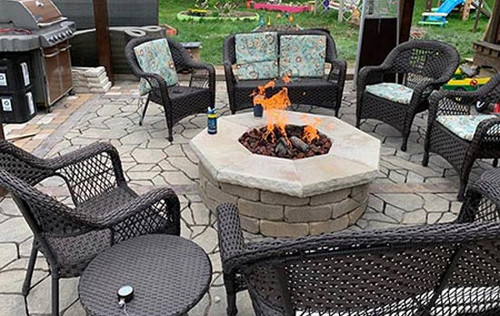5 things to Know Before Buying a Fire Pit Kit
Posted by Amy Ryan on 27th Oct 2020
A Ready to Finish Fire Pit Kit has everything you need (except the enclosure) to create a new or rehabilitate a time-worn Fire Pit. Many consumers no longer want a factory produced, prefabricated fire pit; but something authentic instead. A fire pit kit will simplify the complicated and dangerous process and turn the visualization of a personalized fire pit into a reality. A quality kit will make a DIY fire pit project significantly faster and safer, without compromising quality, function, or originality.
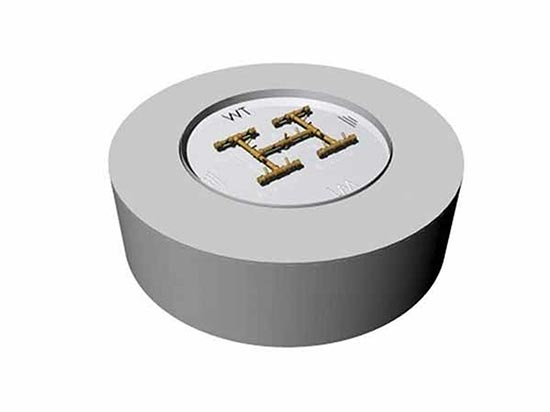
Some fire pit kits on the market today are made from exclusive materials, innovative design, and superior craftsmanship, such as the expertly curated line of fire pit kits carried by YardCouture.com.
What is a Fire Pit Kit?
A fire pit kit includes all the components necessary to get your fire pit blazing within an afternoon’s time, excluding the external enclosure which permits you the freedom to create your own one-of-a-kind structure.
With a fire pit kit you can choose from a gas or wood burning fire pit insert. A gas fire pit insert or drop-in fire pit kit includes all the pieces needed to operate a gas-fueled fire pit. A propane or natural gas fire pit insert includes a fire pit burner, burner pan, ignition system, and the option to add a flex gas line with a gas valve and key. For a wood-burning fire pit, the insert is quite simple. A metal fire pit ring can be inserted into the enclosure to protect the pavers or whichever material is used to surround your flame.
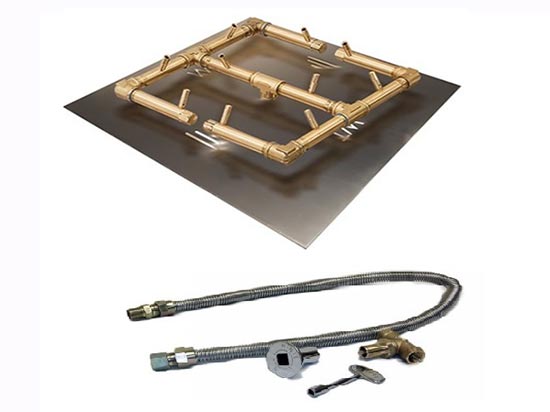
Is a Fire Pit Kit worth it?
If you are up for an afternoon project, a quality Fire Pit Insert kit is a wise and rewarding investment. It instantly adds ambient appeal and creates a cozy gathering spot of dazzling visuals and warmth for family and guests. The kit keeps costs down and simplifies the project which is critical when dealing with highly flammable gas lines.
Whether you plan to update an existing fire pit or build your own from the ground up, a burner kit will have your fire burning bright within a short time. It is a simple, quick, and extremely worthwhile project; still, flames are dangerous, metals corrode, and prices vary widely. Be pragmatic and avoid buyer’s regret by considering these 5 essential factors before taking the plunge into the DIY fire pit world.
- 1.Fuel Source
- 2.Materials & Construction
- 3.Ignition Systems
- 4.BTU’s
- 5.Accessories
FUEL SOURCE
First determine how you plan to fuel your fire. Quality burners are good at mimicking a natural flame and many burners now have built in safety features such as flame control and auto shut-off. With a remote, phone, or tablet control device operating your fire pit couldn't be easier. Yet, if you are a traditionalist or taking the economical route, you may still prefer the classic wood burning Fire Pit.
LOCATION: Always check with your local municipality's regulations. Sometimes wood burning is not allowed due to fire hazards and pollution. If you are debating between natural Gas (NG) or Propane, some locations may Require Natural Gas if the location of the fire pit is within a certain distance of a NG line, therefore propane also may not be an option. If you live in an HOA, PUD, Condo, or other community housing, check with their fuel options.
If you have the option to choose, there are 3 fuel sources we will compare now:
- Wood burning
- natural gas
- propane: either hard lined or BBQ tank with regulator
Natural Gas (NG)
Natural gas burns clean, has good BTU ratings, and generally costs less per cubic foot/gallon; however, NG is less efficient than propane because it only converts about half as much fuel to energy and therefore may end up costing more. There is much variability on the cost difference of these fuels depending on the location and supply source so check with your city utility office to get more information. The color of NG’s burn is a less natural appearance (less yellow), but many do not mind due to its other positive qualities. Natural gas is a clean fuel and does reduce emissions vs other fuel sources.
NG requires a hard line to connect your fire pit and while that may require more effort initially, you will not have to store fuel on location (safer) and your fuel never runs out. With gas fuel, there is less soot so everything stays clean, and your fire will keep burning bright as long as you require. Your flame will not run out of fuel such as with a propane tank or wood burn. Modern technology allows built in flame control and auto shut-off so gas is a safe and clean choice.
Liquid Propane (LP)
Liquid propane can run off a 20lb BBQ tank so if you don’t have a gas line, LP is a good option. Many modern firepits come with a built-in cabinet to conceal your propane tank to maintain aesthetics. LP creates a bit more soot so there will be more residue to clean occasionally to keep your fire pit looking and running its best. If you are using a 20lb propane tank, consider the maximum output of the tank to be 90,000 - 125,000 BTU and a regulator must be used. The reason why this is important is that the BTU rating of the 20lb tank will limit your burner options to sizes that are rated for 125,000 or less BTU. LP is an efficient energy source. While it may be more expensive initially, propane converts more to energy, meaning you will use less, it lasts longer, and ultimately may be a more cost-effective option depending on your location and source.
Wood Burning
Some may still prefer the traditional wood burning fire for its smell, ambience, and nostalgia. Many city dwellers are not allowed fire burning pits, as well as seasonal restrictions. Be sure to check your local municipality's rules and guidelines for wood burning fires. Wood burning is dirtier for the environment and its smoke can stain nearby surfaces. Wood fire pits also have no built-in safety features so you must control the flame, have a fire extinguisher, sand or a pale of water nearby to properly extinguish your flame. Yet wood burning can be an economical choice and may be the preferred choice for some.
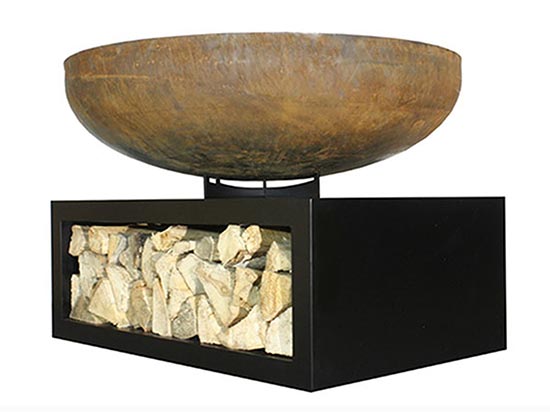
As with any flame, be educated on fire safety and aware of all people and pets that may have access to the fire. Keep a spark screen and fire extinguisher handy and educate yourself and anyone using the fire pit on fire safety!
Burner Materials & Construction
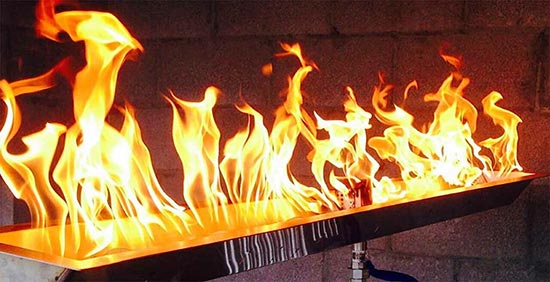
- Bobe Water-Blockers - A steel tubing with the addition of brass water blockers like the Bobe Prefect Flame is the latest innovation within the fire pit burner’s construction. Brass water blockers will prolong the life and performance of your burner by keeping water out of vital parts and brass does not corrode. If your fire pit is kept outdoors, water is inevitable. It is worth buying a fire pit with strategic design features that will keep everything working at its best.
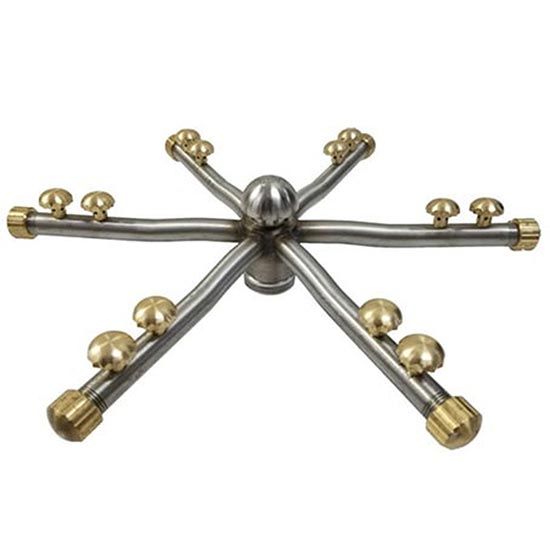
- Crossfire Brass Burner - Brass is the ultimate low maintenance material. Prized for its tensile strength and ability to resist rust and corrosion, an insert made from brass should last a lifetime under normal use. The crossfire all brass burner by Warming Trends, although more expensive than steel, holds its value. If you want less maintenance and an enduring fire pit that withstands more than just high heat, but also wind, rain, and the other corrosive elements of nature, the crossfire burner is a superior choice.
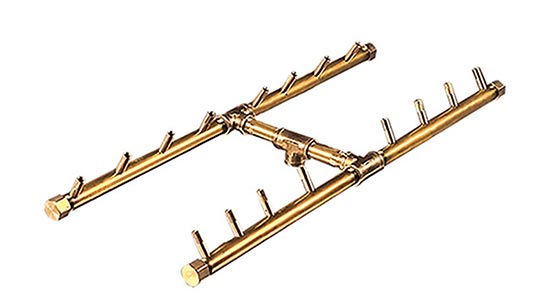
- STAINLES STEEL Burner - Steel is less expensive and breaks down quicker than brass but if you purchase quality 304 heavy gauge steel, it does endure heat and corrosive elements well due to its chromium content. A fire pit insert made from 304 stainless steel is food grade steel but also a sturdy piece of equipment that can persevere through many years of outdoor use.
- Bullet Orifices are designed to compress the gas flow increasing its pressure for a fuller brighter flame. The Outdoor Plus offers their Bullet Burner design which makes it unnecessary to add an additional air-gas mixer when used for liquid propane use. All brass orifices are best because this hardy metal does not rust or oxidize due to high heat, extreme cold, and precipitation. Inferior metals will corrode and need to be replaced often.
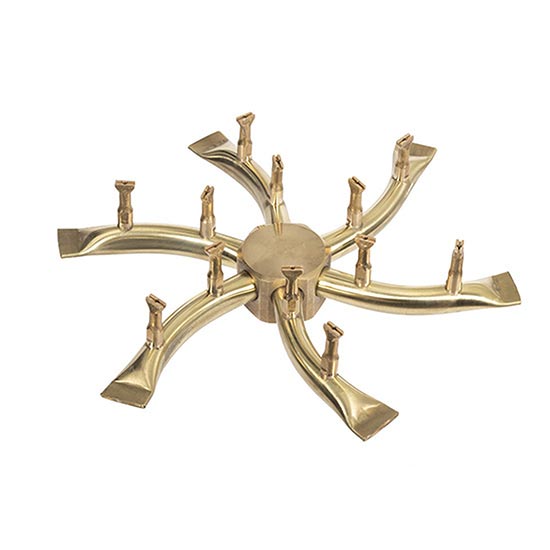
BTU or British Thermal Unit
A British Thermal Unit (BTU) is defined as the thermal energy (heat) required to raise the temperature of one pound of water by one-degree Fahrenheit at sea level. In relation to fire pits this basically means the higher the BTU, the greater the heat and flame output. To put this in proper perspective, one BTU of energy is required to light one match whereas 10,000 BTUs is the heat output of the average household stove.
A fire pit burner generally ranges from 30,000 to 300,000 BTUs. The heat output that is best for you depends on how you plan to use your fire pit, local fire regulations, square footage available, and your budget. A higher BTU means more of everything - bigger flame, more heat output, more space required, and more cost to operate the burner.
Both Natural Gas and Propane may be used but your supply pressure and BTU ratings need to be regulated for both. For Natural Gas, the supply pressure should be set between 3.5" - 7" of water column. For Propane, the supply pressure should be set between 8" - 11" of water column. Consult a local gas supply expert for more assistance with supply pressure.
Ignition Systems
With fire ignition, consider your lifestyle and space. Who will be near the fire? Who will operate it? Will your fire pit be in an urban or rural setting? There are two basic choices to ignite your fire: match-lit ignition (light your fire with a match or lighter) OR purchase an electronic ignition.
Electronic ignition
An electronic ignition system is the modern and instant way to light a fire, once everything is professionally installed. With the push of a button, the fire is blazing. Again, consider who will have access to the fire ignition. Install the ignition out of reach of children or pets.
The latest digital ignition systems can be linked to a remote or smart device for easy and instant flame control. Some ignition systems have built in safety and comfort features such as these technologically advanced systems listed below.
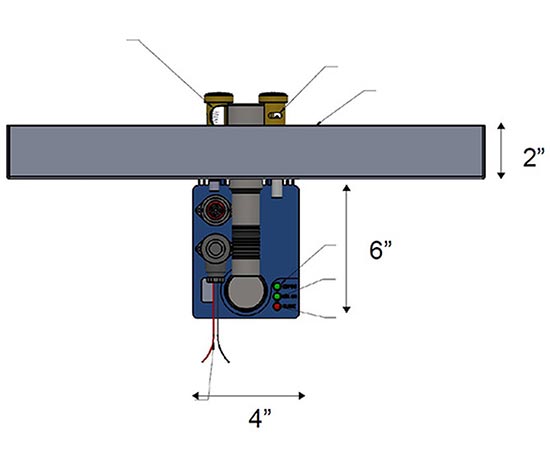
- Bobe Fenix 2.0 12v or 24v automatic ignition system. No matter the weather, your fire will stay lit and blazing bright. This ignition system is also easily controlled by a Remote, PC, Phone, Laptop, or switch.
- The Smart Weather Electronic Ignition System is an advanced CSA certified outdoor igniter, constructed specifically to resist corrosion and stays lit in wind up to 55 mph. Choose from natural gas or liquid propane to fuel your fire.
- Push Button Spark Igniter by Warming Trends is a more economical way to spark your fire pit burner to life.
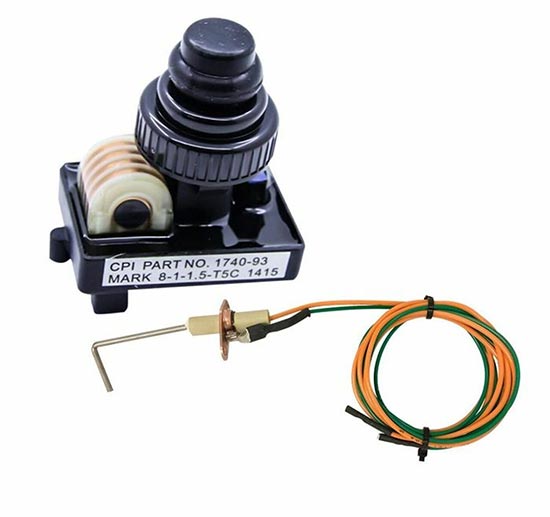
Manual Match Lit
This one is exactly what it sounds. A match or lighter is used to manually light your flame. It can be used for natural gas, propane, or wood burning. This option does cost less financially but also requires more effort to both ignite and extinguish your flame. Always educate yourself on fire safety before attempting to operate any type of fire pit and check the local rules and regulations regarding fire restrictions.
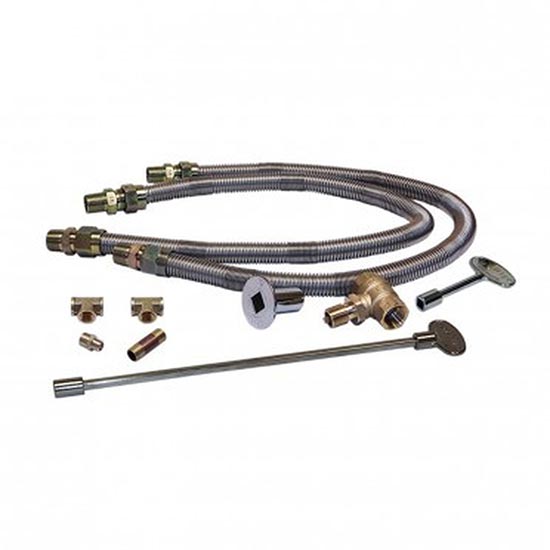
Accessories
PROTECT YOUR FIREPIT AND FAMILY! Open fire pit lids or snuffer covers extinguish a fire faster and keep unwanted debris and precipitation out of your fire pit. A well-fitting lid made from heavy gage metal will preserve the life of your fire pit by keeping it free from contamination of moisture, damaging pests, or debris. Also, it will keep curious little hands of children from reaching in to touch still extremely hot embers! A quality lid is a wise investment to keep your fire pit and smaller guests safe while not in use.
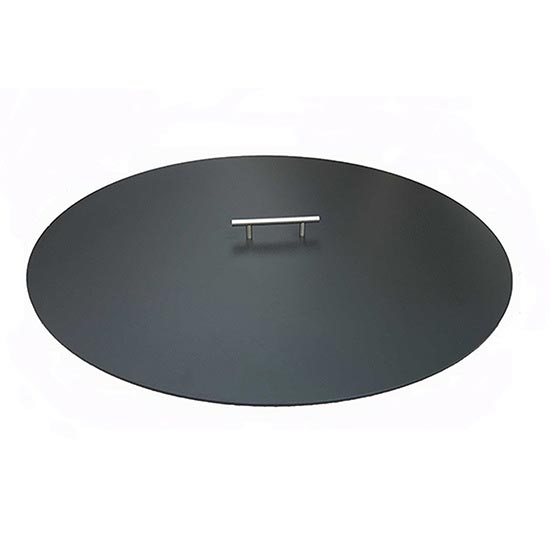
Spark screens or guards
A spark screen or guard is a metal or glass cover that allows ventilation so the fire can breathe while blocking hazardous sparks from spewing out onto people, pets, and nearby flammable objects. Safety guidelines require protective screens and covers for open burning fires in some areas but every fire pit should have one for the protection of you, your loved ones, and your valuables.
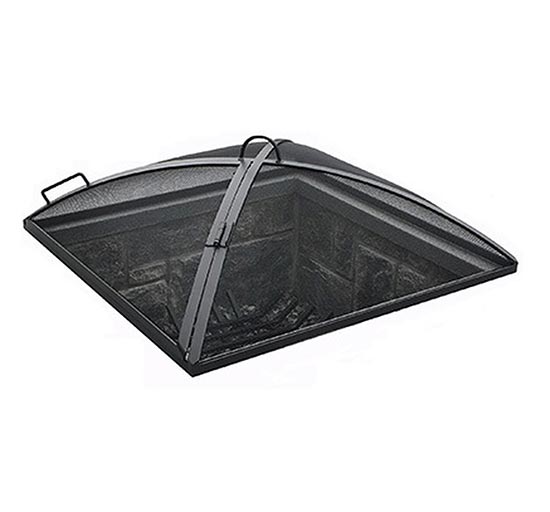
Fire pit screens and guards are offered in multiple shapes and styles from round hinged, dome lift off, square, or rectangular. Specialty sellers such as Yard Couture provide custom sizes for your custom fire pit.
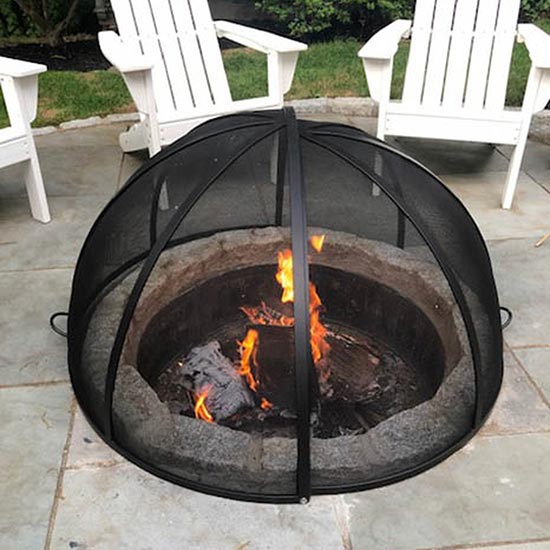
If you have a large fire pit, a hinged or pivoted panel is your best option. A large metal lid is too heavy to lift on and off while tending to the fire, not to mention dangerous. An easy access panel allows quick fire pit access that anyone can handle such as this innovative carbon steel Pivot Spark Screen by Aspen industries which features a “clam shell” pivot design allowing either end of the screen to be opened for easy fire pit access. Bursting sparks and embers will spoil the outdoor fire pit experience which is why Spark Screen covers and lids are essential for a fun and safe event.
Fire glass, rocks, logs
Fire media will add a personalized touch, conceal hardware, and generate striking ambient visuals. There are several updated options available when it comes to fire pit media including:
- Fire glass: Comes in various shapes, sizes, colors and textures. Fire glass rocks or stones are available in smooth or rough textures and they add a bit of luminous, sparkle to your patio space.
- Volcanic/lava rock: Natural volcanic rock is a rock formed from the lava eruptions of a volcano. It is available in black, red, or gray. It adds a 'formed by nature', textural appearance.
- Fire logs: Available in steel or ceramic which are molded into a realistic wood log form. High quality artificial logs enhance a modern-rustic landscape without emitting dirty smoke into the environment.
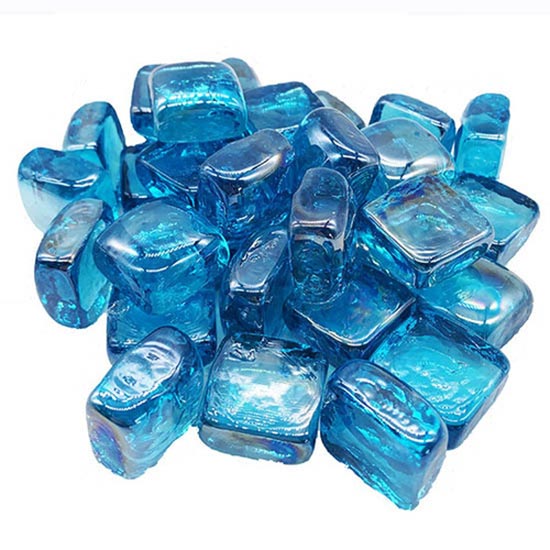
The addition of fire glass or logs to your indoor or outdoor fire pit/fireplace feature will enhance its visual appeal! It’s time to freshen up those antiquated gas fire logs with a modern, practical options. Reflective fire glass, lava stones, steel or ceramic logs enhance the ambient appearance of your fire feature while hiding unsightly pipes found in gas fireplaces and fire pits.
About Yard Couture
Yard Couture is a family-run business located in the scenic Wasatch Mountains of Salt Lake City, UT. We enjoy artistry in all its forms and are inspired by the pure, organic beauty of our planet which is why we strive to preserve it through eco-friendly practices, functional design, and hand-made pieces. We believe any space will cultivate enjoyment with the addition of exquisite and highly functional pieces.
We are proud to sell superior outdoor architectural elements that are hand-made in the USA by skilled artisans with premium materials and finishes. We only sell the highest quality natural gas and propane fire pit kits and accessories to provide you with the foundation to create the centerpiece of your outdoor living vision. Our selection of DIY fire pit kits by Warming Trends, The Outdoor Plus and Bobe Water And Fire are the market's finest outdoor fire pit kits when it comes to performance, durability, and value.
For all questions about any of the Fire Pit Kits or accessories we carry CONTACT YARDCOUTURE . We are happy to assist you!


